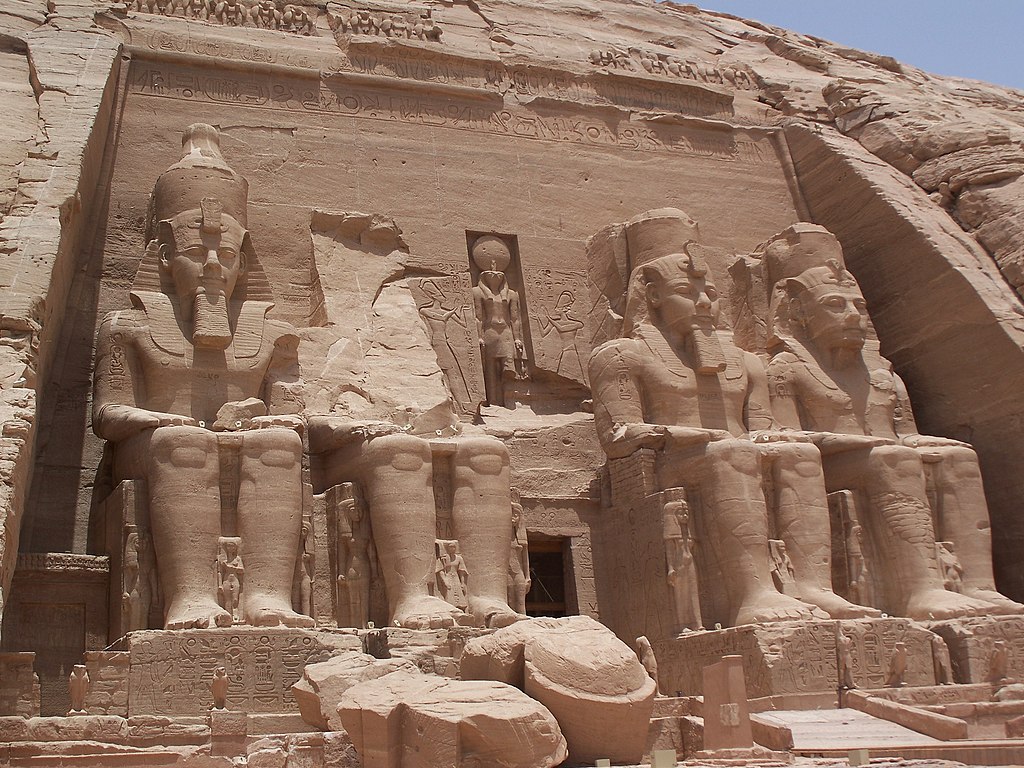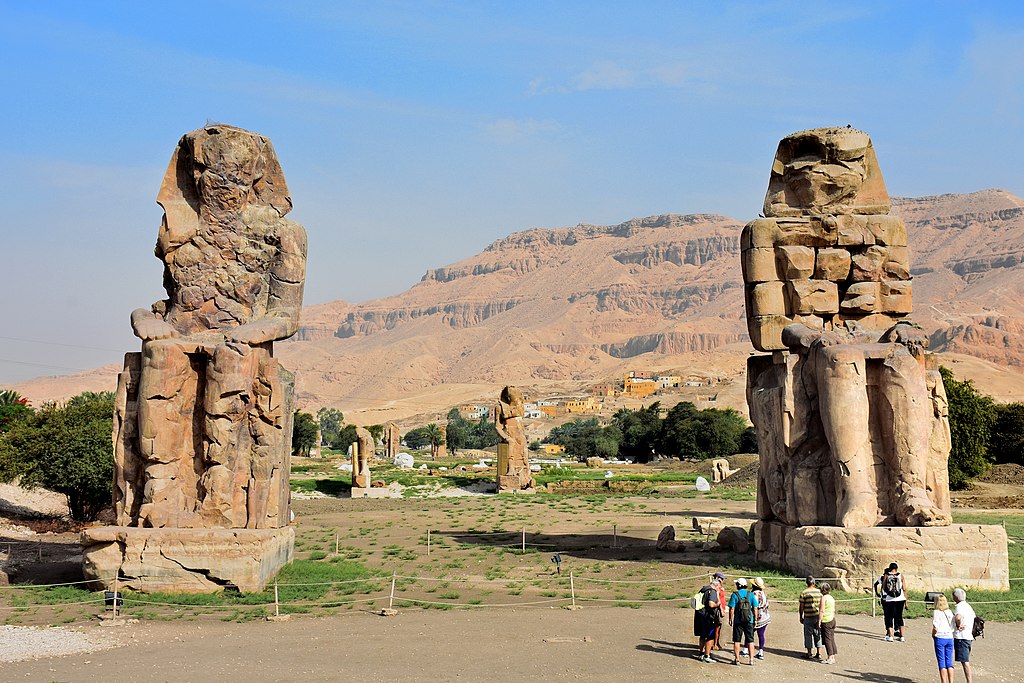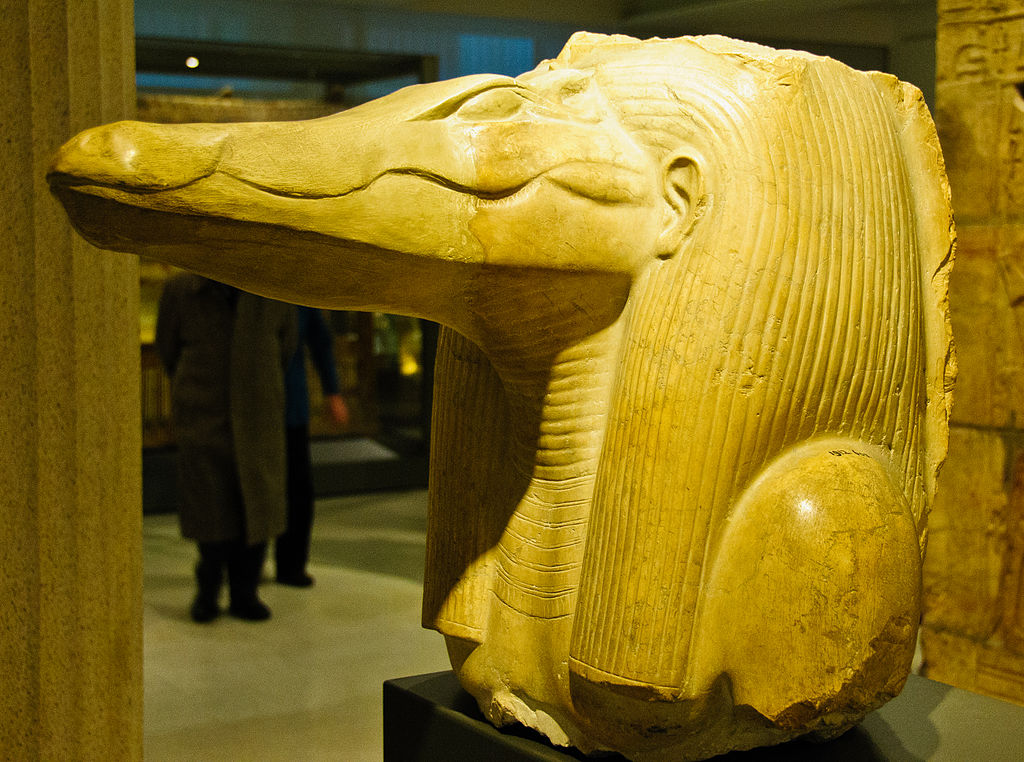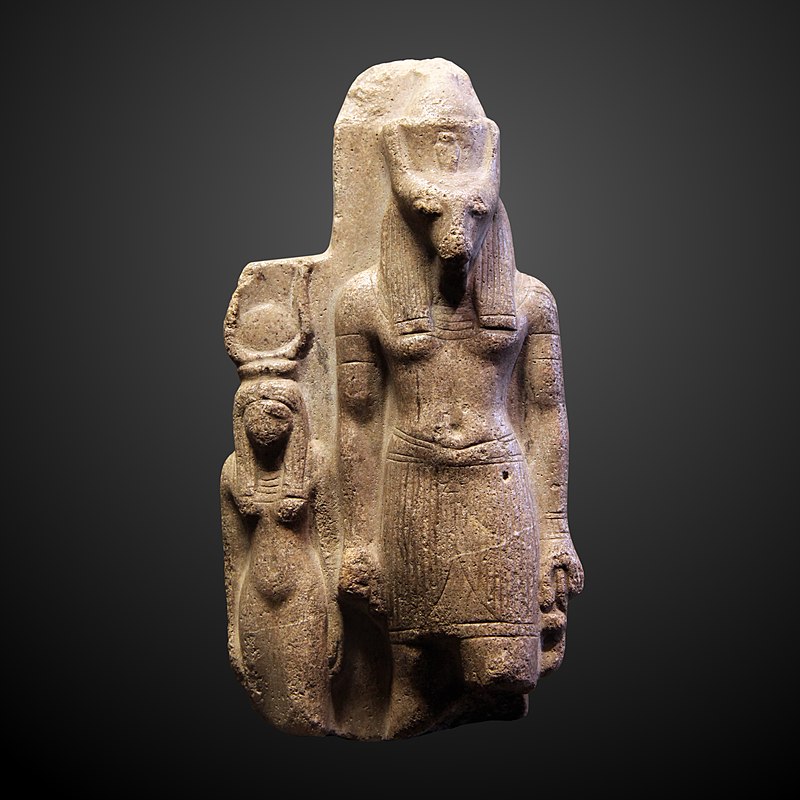Egyptian Sculpture
The sculptural tradition of Ancient Egypt encompasses not only monumental works found in temples and tombs but also a plethora of refined and delicate small-scale pieces.

Among these, the technique of sunk relief stands out, with its forms and outlines best appreciated under the illumination of sunlight, where shadows emphasize the intricacies of the design. One of the most characteristic features of Egyptian statuary is the pose of standing figures, with one foot placed forward, a composition that not only lends balance but also conveys strength and stability. This pose, prevalent from the early periods of Egyptian art through the Ptolemaic era, coexisted with seated statues, both forms reflecting the enduring artistic conventions of the culture.
Notably, Ancient Egyptian sculpture often depicted gender differences, with women portrayed in an idealized and perpetually youthful manner, while men were depicted in a range from idealized to more realistic, sometimes showing signs of aging, which was viewed positively as a symbol of regeneration and wisdom.
Monumental Sculpture
Egyptian monumental sculpture stands as a testament to the grandeur and sophistication of Ancient Egyptian art and culture. Spanning millennia, these colossal works adorned the temples, tombs, and public spaces of Egypt, serving both religious and commemorative purposes.

Characterized by a sense of permanence and divine authority, monumental sculptures often depicted gods, pharaohs, and other important figures of society. Carved from durable stone such as granite, limestone, and sandstone, these sculptures exhibited remarkable craftsmanship and attention to detail. The subjects were typically portrayed in a stylized manner, with idealized proportions and serene expressions, reflecting the Egyptian reverence for order, balance, and eternal truths.

Sphinxes
The Great Sphinx of Giza, believed to have been constructed during the reign of Pharaoh Khafre c. 2558-2532 BC, stands as one of the oldest and most iconic monumental sculptures in Egypt.

Carved from the limestone bedrock of the Giza Plateau, the Sphinx embodies the fusion of human intelligence and animal strength, with its lion’s body and human head symbolizing royal power and divine authority. While the original purpose and significance of the Sphinx remain subjects of scholarly debate, its enigmatic presence continues to captivate and inspire awe, drawing countless visitors from around the world to marvel at its timeless majesty.
Although no exact replicas of the Great Sphinx exist, avenues lined with sphinxes were a common feature in Egyptian temple complexes, serving as guardians and symbols of protection.

Pharoahs
Egyptian pharaohs were immortalized through sculpture as powerful rulers, divine intermediaries, and symbols of stability and order.

Carved from durable materials like granite, diorite, and limestone, these sculptures depicted pharaohs with idealized features and regal attire, conveying their authority and divine status. Pharaohs were often shown in a rigid and formal stance, with their arms crossed over their chest holding symbols of kingship such as the crook and flail. Facial expressions were typically serene and impassive, reflecting the pharaoh’s role as a wise and benevolent leader. These sculptures adorned temples, tombs, and palaces, serving both religious and political functions by reinforcing the pharaoh’s divine right to rule and ensuring their eternal presence in the afterlife.






Deities
In ancient Egyptian art, sculptures of deities played a central role in religious practices and beliefs. Represented with symbolic attributes and anthropomorphic features, these sculptures captured the essence of divine beings worshipped by the ancient Egyptians.

Deities were depicted in various forms, from human-like figures to zoomorphic representations, reflecting their multifaceted roles and associations with natural elements and animals. Sculptures of gods and goddesses adorned temples, tombs, and household shrines, serving as focal points for rituals, offerings, and prayers.






